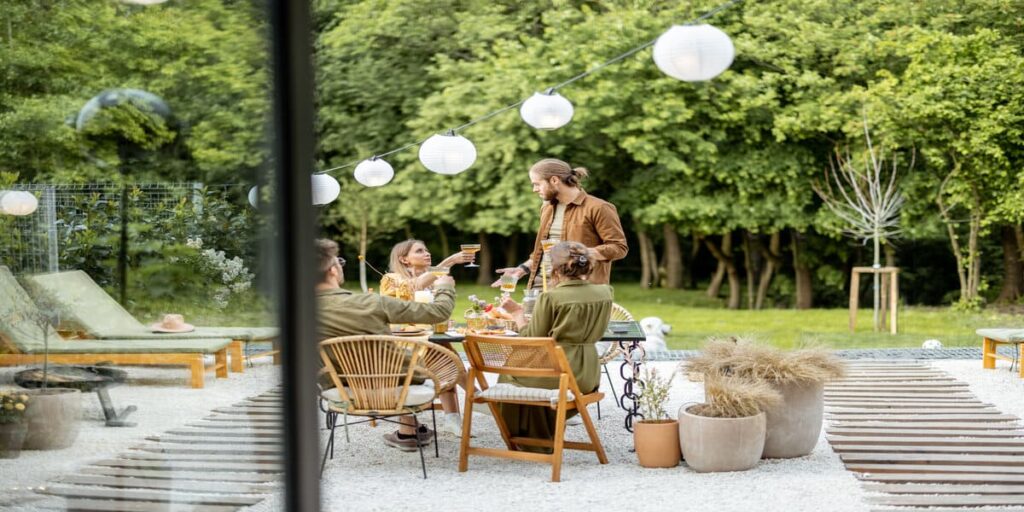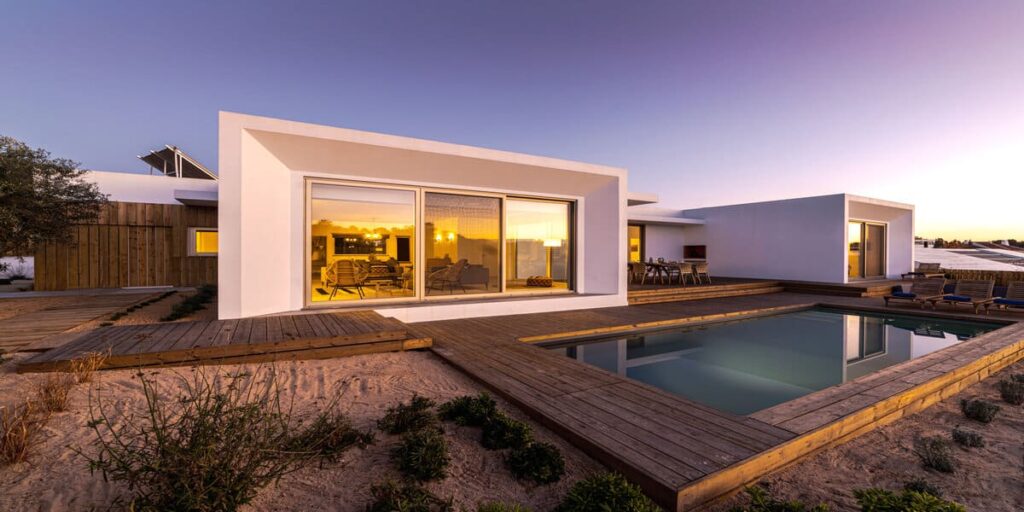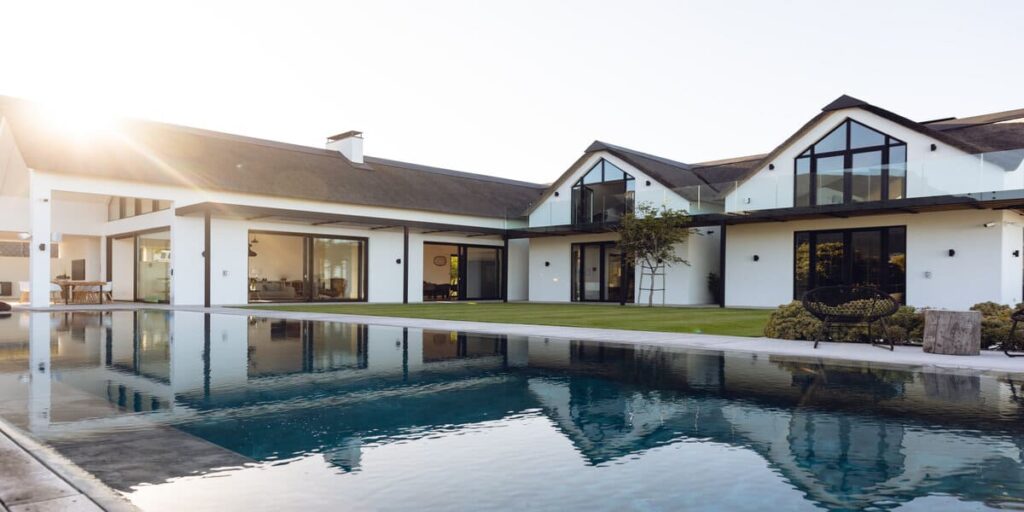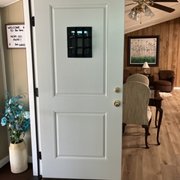“A home is not about quick satisfaction; it’s about lasting value.“
In this modern world we live in, home design trends have been constantly changing. Sometimes, keeping up with the current trends may be both tiresome and costly. So, if you’re a homeowner wanting to stay in line with the trend for years, you must add timeless elements in your home that will last for decades.
Shifting from purely functional spaces to ones that reflect personal style and environmental consciousness, today’s home trends focus on sustainable materials, energy efficiency, and creating flexible spaces.
Importance of Timeless Additions
If you want your home to remain relevant and appealing for many years, you must go for timeless additions. They involve choosing styles and materials that won’t become outdated quickly, making the home a lasting investment. In doing this, your home can adapt to various trends and even personal changes in your life. Not only that, it can also enhance your home’s aesthetic value and long-term worth.
Use of Recycled and Renewable Resources
When adding timeless pieces to your home, you might want to go for recycled and renewable resources. Using materials such as reclaimed wood or recycled glass can help reduce waste and lower the environmental impact of construction.
Aside from that, choosing items that serve multiple purposes can maximize space and reduce the need for more products. For example, a coffee table with storage helps keep things organized, supports a minimalist style, and decreases clutter in your home.
You can also focus on quality and durability when selecting these pieces to ensure they last longer, saving you money and reducing waste over time.
Benefits of Sustainable Building
If you go for sustainable building practices, you can expect both environmental and economic benefits. For instance, by using energy-efficient materials and designs, you can reduce utility costs and minimize your carbon footprint. Many homeowners will agree that sustainable buildings often have better air quality and natural lighting, thus offering a better living experience. With its growing popularity and environmental benefits, these practices can increase the property’s value.

Latest in Home Automation
Perhaps you’ve already heard of the latest trends in home automation that focus on creating smarter, more connected homes. You can incorporate technologies like voice-controlled assistants, automated lighting, and smart thermostats into your home to enhance convenience and energy efficiency. This will give you greater control and security as you can control these systems just by using your Smartphone!
It will definitely be a lasting addition to your home for an easier and enhanced lifestyle.
Future-Proofing with Technology
To avoid being outdated easily, you can invest in future-proofing your property. You can do this by incorporating advanced technology in your home design and installing systems that can be easily updated as technology evolves, like smart home wiring and adaptable energy systems. These advanced designs keep the home up-to-date with new devices and technology, keeping it modern and functional. Adding these features not only makes the home more attractive now but also helps maintain its value and relevance in the future.
Designing for Versatility and Adaptability
If you go for versatility and adaptability in your home, you must design it in a way that allows spaces to serve multiple purposes over time. For example, you can add features like movable walls or convertible furniture that enable easy reconfiguration of living areas. This flexible design accommodates changing family needs, work-from-home trends, and evolving personal preferences. You can ensure that your space remains functional and relevant for years by focusing on adaptable design.
Examples of Convertible Spaces
Convertible spaces in homes are designed to serve various functions with minimal adjustments. For instance, a home office can easily transform into a guest room with a Murphy bed or a fold-down desk. A dining area might double as a craft or play space with modular furniture and storage solutions. These multi-use spaces maximize the utility and flexibility of a home, catering to many different activities and needs.

Embracing Natural Light and Outdoor Access
Modern homes are trending towards designs that include lots of natural light and easy access to the outdoors. Large windows, skylights, and glass doors bring in sunlight and connect seamlessly with the outdoors. These features enhance the aesthetic appeal of a home and improve mental well-being by connecting residents with nature. Also, using more natural light can cut down on the need for electric lights and save energy.
Blurring the Lines Between Inside and Out
Modern home design is becoming more and more focused on blurring the lines between indoor and outdoor spaces. This is done by using retractable glass walls, outdoor kitchens, and continuous flooring that goes from inside to outside. These designs make inside and outside flow together, expanding living areas and connecting with nature. This makes the home look better and promotes outdoor living and entertaining.
Incorporating Natural Elements
Using natural elements in home design became popular for its aesthetic and health benefits. Materials like wood, stone, and plants are commonly used to bring a touch of nature indoors. These elements create a calming and refreshing atmosphere for a more quiet living environment. Natural materials can also improve air quality and connect residents with the outdoors.
Designing for Mental and Physical Well-being
In modern architecture, home designs focusing on mental and physical well-being is also becoming a trend. This means making spaces with plenty of natural light, good airflow, and areas for relaxing and working out. To enhance mental health, you can incorporate elements like indoor gardens or meditation rooms into your home. For overall fitness, you can create dedicated spaces for physical activities. These design choices create a more healthful and harmonious living environment.

Elements That Transcend Trends
Some design elements stay timeless and never go out of style in home decor. Classic choices like neutral color palettes, natural wood finishes, and simple, clean lines always stay in style. These elements form a base that can be updated with simple additions or small changes, letting the home change without big renovations. With these lasting elements, you can keep your home looking modern and classic over time.
Balancing Modern and Traditional Looks
Combining modern and traditional looks in home design also creates a timeless and appealing aesthetic. This can be done by blending contemporary elements, like minimalist furniture, with classic features, such as ornate moldings or vintage accents. Blending these styles neatly is important. This way, homeowners can enjoy both traditional comfort and modern sleekness together.
Innovations in Insulation and Energy Use
New advances in insulation and energy use are making homes more efficient. Advanced materials like aerogel insulation and smart windows greatly reduce heat loss, leading to lower energy bills and a smaller carbon footprint. Smart home systems improve energy efficiency by adjusting heating and cooling based on who’s home and the weather. These technologies save money and make living more sustainable.
Long-Term Cost Benefits
Investing in sustainable and efficient home designs can lead to big savings over time. Energy-efficient appliances, solar panels, and improved insulation reduce monthly utility bills and maintenance costs. Eco-friendly materials might cost more at first, but they last longer, reducing the need for repairs. Over time, this saves money and boosts the home’s value and appeal.
Reflecting Local Styles and Materials
Adding local styles and materials in home design gives it a unique charm specific to the area. Using locally-sourced materials like stone, wood, or traditional textiles supports the local economy and cuts down on transportation emissions. Designs that mirror local architecture and culture make a home feel connected to its community and enhance its look. These designs also support environmental sustainability.
Incorporating Heritage into Modern Designs
Mixing traditional elements with modern designs gives homes a rich, layered look. This can mean adding old architectural features or antique furniture to modern spaces. Such combinations preserve historical character while providing modern comfort and functionality. This design honors the past and adds a timeless quality to the home’s design.

Emerging Materials and Techniques
The home construction field is always changing with new materials and methods. Innovations like self-healing concrete, transparent aluminum, and 3D-printed building parts are becoming popular. These materials offer enhanced durability, efficiency, and design possibilities. Adopting these techniques allows for more creative, sustainable, and resilient home construction.
Predicting the Next Big Things in Home Additions
Predicting future trends in home additions means looking through new technologies and how lifestyles are changing. Smart homes with AI-driven systems are expected to become more common. Eco-friendly and modular construction methods are becoming more popular as more people want sustainable and flexible building options. Spaces dedicated to health and well-being, like home gyms and meditation rooms, will also likely become standard features in modern homes.
Reflection on Home Addition Trends
In home additions, there’s a big focus on sustainability, technology, and flexibility. The increasing use of eco-friendly materials and smart home features shows a shift towards more responsible and efficient living. Making spaces adaptable and multi-functional also suits the changing needs of modern life, helping homes stay useful and relevant over time. These trends suggest a future where home design focuses not just on looks but also on longevity, sustainability, and adaptability, creating a better living environment for future generations that is both eco-friendly and technologically advanced.

Frequently Asked Questions
What are the most popular materials for sustainable home additions?
Popular sustainable materials include reclaimed wood, recycled glass, and bamboo. These materials are environmentally friendly and add unique character to your home.
How can I incorporate smart technology into my home?
You can install smart thermostats, automated lighting systems, and voice-controlled assistants. These technologies offer convenience and can be easily controlled via smartphones.
How do indoor-outdoor living spaces benefit homeowners?
These spaces enhance the overall living experience by increasing natural light, improving air quality, and providing a seamless transition to outdoor living, which is great for entertaining and relaxation.
What are some ways to balance modern and traditional looks in home design?
You can achieve this balance by mixing modern elements like clean lines and minimalist furniture with traditional accents like vintage décor or classic architectural details.
How can design elements transcend home design trends?
Timeless design elements such as neutral color schemes, natural materials, and simple, clean lines can easily adapt to changing trends and personal preferences.
How can I reflect local styles and materials in my home design?
Use locally sourced materials like native stone or wood and incorporate design elements of your region’s architectural heritage.
.



























